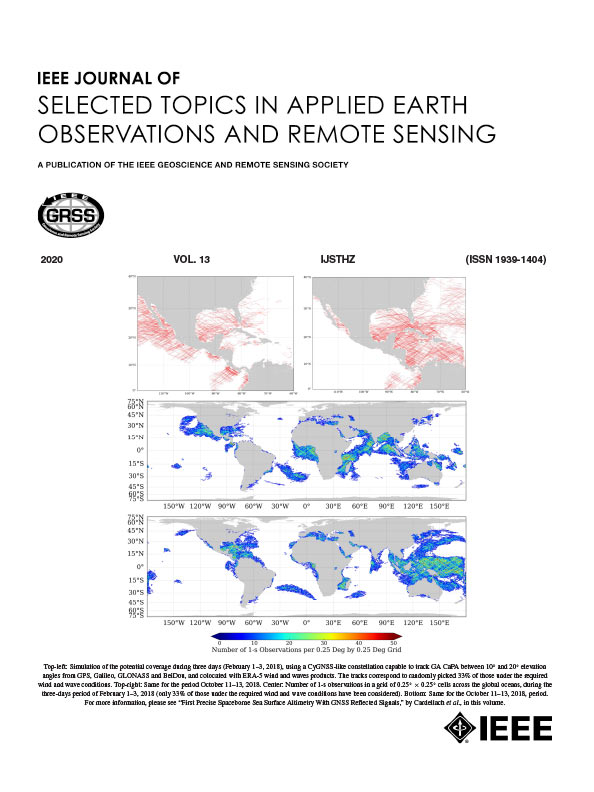Enhancing Urban Heat Island Analysis Through Multisensor Data Fusion and GRU-Based Deep Learning Approaches for Climate Modeling
IF 4.7
2区 地球科学
Q1 ENGINEERING, ELECTRICAL & ELECTRONIC
IEEE Journal of Selected Topics in Applied Earth Observations and Remote Sensing
Pub Date : 2025-03-26
DOI:10.1109/JSTARS.2025.3554529
引用次数: 0
Abstract
Rapid urbanization and land-use changes have exacerbated the urban heat island (UHI) effect, threatening urban sustainability and climate resilience. This study uses a novel gated recurrent unit (GRU)-based deep learning model in addition to the Mann–Kendall trend, Pearson correlation, and continuous wavelet to investigate the UHI phenomenon in Multan city of Pakistan. The approach utilizes the normalized difference vegetation index (NDVI) and normalized difference built-up index (NDBI) as essential variables to forecast UHI accurately using a GRU-based deep learning model using a monthly Landsat dataset from 2001 to 2023. The results from the Mann–Kendall test indicated a minor increase in monthly UHI values, accompanied by notable seasonal fluctuations with a substantial decrease in winter (Tau = −3.486), whereas a notable increase is observed in the summer season (Tau = 0.158). The NDVI exhibited a notable annual increase (Tau = 3.43), suggesting enhanced vegetation health. Conversely, NDBI showed a significant decrease (Tau = −0.907). The result of Pearson's correlation study showed that UHI is significantly negatively correlated with NDVI and positively with NDBI, with a correlation coefficient of −0.540 and 0.344, respectively. Wavelet coherence analysis revealed considerable seasonal and annual relationships between UHI, NDVI, and NDBI. The GRU-based model achieved a coefficient of determination (R2) of 0.90 with an RMSE value of 0.09, indicating robust predictive performance. The SHAP (SHapley Additive explanations) analysis revealed that NDVI is the predictor with the most significant influence. The adopted approach emphasizes vegetation's crucial function in reducing UHI's effects and offers valuable insights for urban planning and measures to mitigate climate change.通过多传感器数据融合和基于gru的气候建模深度学习方法增强城市热岛分析
快速城市化和土地利用变化加剧了城市热岛效应,威胁着城市的可持续性和气候适应能力。本研究除了使用Mann-Kendall趋势、Pearson相关和连续小波之外,还使用了一种新的基于门通循环单元(GRU)的深度学习模型来研究巴基斯坦木尔坦市的热岛现象。该方法利用归一化植被指数(NDVI)和归一化建筑指数(NDBI)作为基本变量,利用基于gru的深度学习模型,利用2001 - 2023年每月Landsat数据集准确预测城市热岛指数。Mann-Kendall检验结果显示,月平均热岛指数略有上升,并伴有明显的季节波动,冬季显著下降(Tau = - 3.486),而夏季显著上升(Tau = 0.158)。NDVI呈显著的年增率(Tau = 3.43),表明植被健康程度有所提高。相反,NDBI明显下降(Tau = - 0.907)。Pearson相关研究结果显示,城市热岛指数与NDVI呈显著负相关,与NDBI呈显著正相关,相关系数分别为- 0.540和0.344。小波相干分析显示,城市热岛指数、NDVI和NDBI之间存在明显的季节和年度关系。基于gru的模型的决定系数(R2)为0.90,RMSE值为0.09,表明预测性能稳健。SHapley加性解释(SHapley Additive explanatory)分析显示NDVI是影响最显著的预测因子。所采用的方法强调了植被在减少城市热岛影响方面的关键功能,并为城市规划和减缓气候变化的措施提供了宝贵的见解。
本文章由计算机程序翻译,如有差异,请以英文原文为准。
求助全文
约1分钟内获得全文
求助全文
来源期刊
CiteScore
9.30
自引率
10.90%
发文量
563
审稿时长
4.7 months
期刊介绍:
The IEEE Journal of Selected Topics in Applied Earth Observations and Remote Sensing addresses the growing field of applications in Earth observations and remote sensing, and also provides a venue for the rapidly expanding special issues that are being sponsored by the IEEE Geosciences and Remote Sensing Society. The journal draws upon the experience of the highly successful “IEEE Transactions on Geoscience and Remote Sensing” and provide a complementary medium for the wide range of topics in applied earth observations. The ‘Applications’ areas encompasses the societal benefit areas of the Global Earth Observations Systems of Systems (GEOSS) program. Through deliberations over two years, ministers from 50 countries agreed to identify nine areas where Earth observation could positively impact the quality of life and health of their respective countries. Some of these are areas not traditionally addressed in the IEEE context. These include biodiversity, health and climate. Yet it is the skill sets of IEEE members, in areas such as observations, communications, computers, signal processing, standards and ocean engineering, that form the technical underpinnings of GEOSS. Thus, the Journal attracts a broad range of interests that serves both present members in new ways and expands the IEEE visibility into new areas.

 求助内容:
求助内容: 应助结果提醒方式:
应助结果提醒方式:


